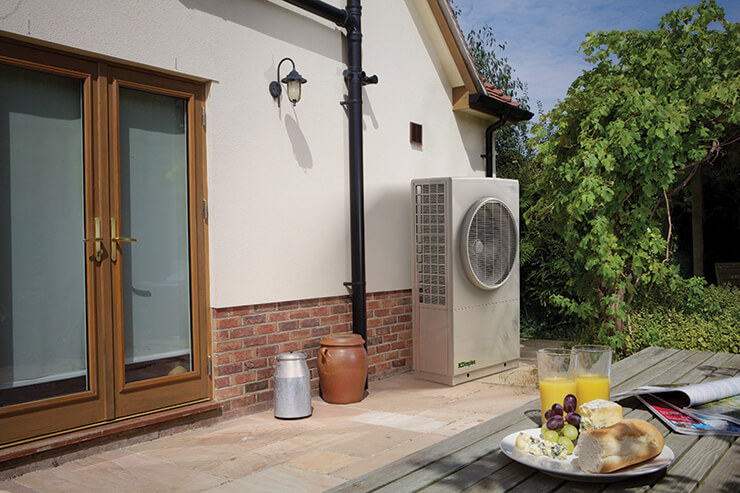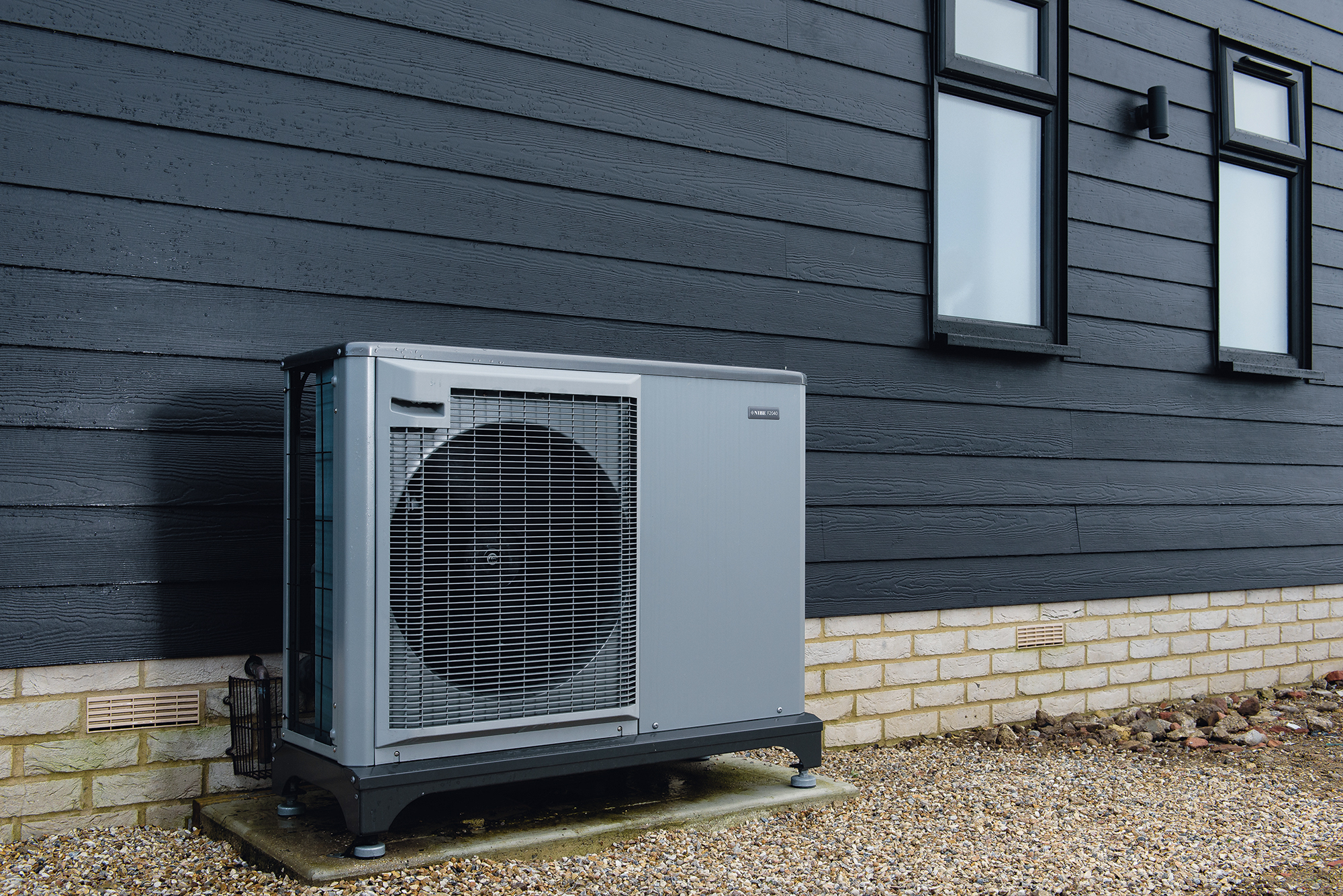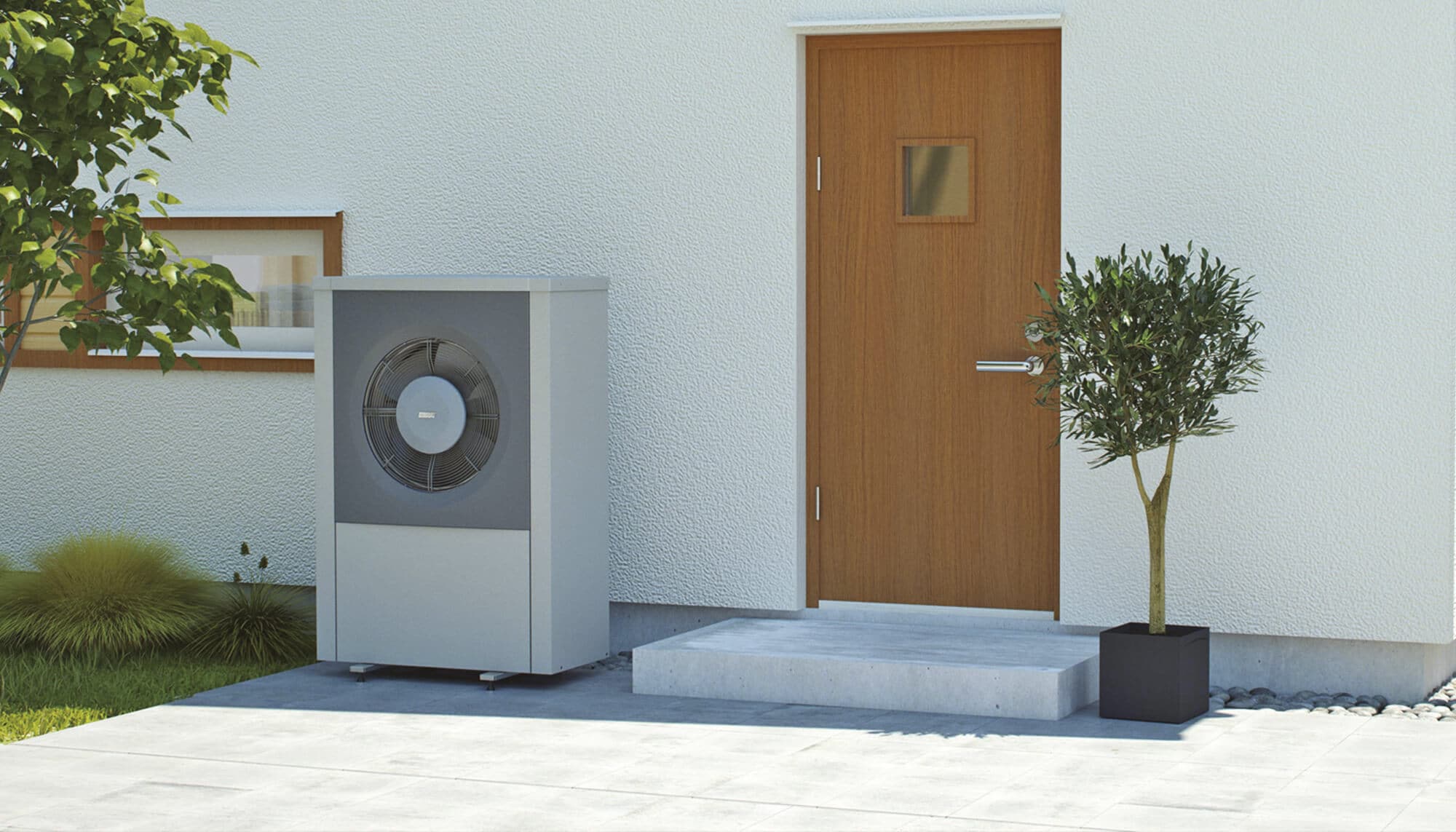Creating a sustainable home with low running costs is one of the great attractions of undertaking a major project. But this isn’t just about deciding you want to use an air source heat pump and getting one installed. Renewable technologies can be a great choice, but you need to determine whether they’ll perform well in your project.
The first step is to get the building fabric right. Once you’ve got the key ingredients of good insulation and airtightness levels in place (to prevent warmth escaping from your living space) you can start to think about how to power your central heating system. And that can include renewables.
One of the most popular solutions, especially if you’re off the mains gas grid, is to fit an air source heat pump (ASHP). Straightforward and relatively affordable to install compared to some renewables, if specified correctly this tech can help you achieve significant savings on household energy bills.
Pairing the appliance with other sustainable options, like solar thermal panels, could help to further reduce running costs and increase the overall efficiency of your heating system.
A range of factors will contribute to your decision on whether an ASHP will work for you, including the size of the house, insulation levels and the type of emitters you’re using.
In this guide you’ll find how to determine whether an ASHP is right option for your project, plus we get the experts to answer the in-depth questions you really want to know about:
- How air source heat pumps work
- Is an air source heat pump right for you?
- Why choose air rather than ground source?
- Installing an air source heat pump
- ASHP costs
- Air Source Heat Pump FAQ
- What should you look for to make sure your ASHP is specified correctly?
- Has installation of ASHP improved since 2013?
- Why do some suppliers still list the COP rather than the SCOP
- Are ASHP too noisy or has this improved?
- Can I install an ASHP to an old boiler-fuelled radiator and pipework system?
- What impact does the heat transfer fluid have on ASHP sustainability?
- How much guidance do installers give homeowners on getting the best performance from their heat pump?
- Can you use a heat pump to provide hot water?
- Hybrid heating systems: combining boilers with ASHPs
Last update: January 2018
How air source heat pumps work
Essentially, air-to-water heat pumps operate in a similar way to fridges – but in reverse. A fan-powered unit is used to extract warmth from the outside air to provide space heating and hot water for the home.
“The fan blows air over a coil, which contains a working fluid that absorbs the warmth. This is condensed using an electric compressor to increase its temperature, before being passed through a heat exchanger to warm water for the central heating system,” says Brian Horne, domestic energy expert at the Energy Saving Trust.
An appliance’s efficiency level is measured according to its coefficient of performance (COP), which indicates the amount of usable energy extracted from the air compared to how much electricity is used to power the pump. For example, a COP of five means that for every one kilowatt (1kW) of electricity used, 5kW of heat is produced.
In addition to their excellent efficiency, ASHPs offer a raft of other benefits. “Modern versions are very quiet and come with energy-monitoring systems and internet-based smart controls,” says Max Halliwell, product marketing manager for heating at Mitsubishi Electric. “Many of the best models are inverter-driven, which means they modulate power consumption to suit the needs of the house at that moment.”
If installed correctly by an MCS (Microgeneration Certification Scheme) accredited engineer, homeowners can expect their device to deliver effective performance for approximately 15-20 years – which compares well to boilers and other renewable heat source options.

Available in a range of outputs from 8kW-12kW, this model has a maximum water flow temperature of 65°C. A-class air source heat pump, Dimplex
Is an air source heat pump right for you?
Most air source heat pumps deliver a lower flow temperature than conventional appliances, such as gas boilers. This makes them an ideal partner for well-insulated new builds that maintain a constant interior temperature.
“Preventing warmth from escaping your home is particularly important if you’re planning on installing an ASHP,” says Scott Greening, commercial manager at Ice Energy. “Heat pumps aren’t designed to take a property from a cold to warm state as quickly as possible. Instead, they gently heat the fabric of the building and then continually provide warmth at the same rate it’s lost.”
The most effective setup tends to be an ASHP alongside underfloor heating (UFH). This creates a more comfortable living environment because the pump only needs to provide a low flow temperature of 30°C-35°C.
Older and draughtier properties require a higher operating temperature to maintain a pleasant internal climate. “Although ASHPs are capable of operating at 45°C-50°C, this reduces their efficiency, which will have an impact on the environmental savings you could make,” says Jeff Tomlinson, sales and marketing director at Waterkotte UK.
Why air rather than ground source?
One of the big advantages of this tech is that it can be easily fitted on both new builds and renovations. “ASHPs don’t require loops of underground piping like their ground source cousins. Where space is limited, air source will always be a more cost-effective and less disruptive option than drilling boreholes,” says Scott. However, if you’re self-building, the extra digging required to install the loop in your garden can be done at the same time as the other groundworks.
“Air source technology is often preferable over other renewables when the end-user doesn’t want to be hands-on with the appliance. For example, biomass boilers require the delivery of fuel pellets or chips and will need regular topping up,” says Jeff from Waterkotte. As such, ASHPs are frequently the tech of choice for those who would prefer a low-maintenance system. They’re also easy to integrate into a scheme, as the internal part of the pump is no larger than a standard boiler.
Installing an air source heat pump
The heat pump itself is usually fitted outside in a position where it will receive good airflow. It then supplies hot water to the indoor unit (usually stored in a utility room or airing cupboard) which in turn delivers it to your chosen central heating emitters. It can also supply a cylinder for domestic hot water.

Air Source Heat Pump by NIBE
Your heating engineer will be able to survey the house to determine the best size of pump, but as a guide a 4kW ASHP will provide the sufficient output for a typical three or four-bedroom home. “They will consider factors such as the building fabric, glazing, room dimensions and heat loss when calculating the required output” says Karen Trewick from Dimplex.
Because of the lower flow temperature ASHPs supply, they work best alongside emitters with larger surface areas, such as UFH or specially-designed oversized radiators.
It is possible to retrofit an air-to-water heat pump in an older property. However, structures that aren’t insulated to current Building Regs may benefit from a hybrid model. “These appliances can bridge the gap in houses where heat loss is too high for the building fabric to be warmed by an ASHP alone,” says Stephen Bancroft, heat pump team manager at EES Renewables.
The hybrid uses a combination of a heat pump and a gas boiler, calculating the efficiency from both sources and enabling whichever appliance will deliver the most cost-effective option. “Once the efficiency threshold is breached – which is basically when the outside climate drops below 1°C-2°C – the ASHP relinquishes all heating demand to the boiler because at this point, higher flow temperatures will be required to maintain indoor comfort levels.”
Heat pump costs
You can expect to pay £5,000-£8,000 to install an air-to-water heat pump system in a well-insulated three-bedroom home. For properties that require a higher heat output, this sum could rise to as much as £12,000.
However, the low running costs that are associated with this form of renewable tech are particularly attractive. According to the Energy Saving Trust, switching from an older, non-condensing gas boiler could save you between £295 and £425 on your annual fuel bills.

This Build It Award-winning ASHP offers a seasonally-adjusted COP of up to 4.84, as well as industry-leading sound performance. IVT AirX air source heat pump, Ice Energy
The post Air Source Heat Pumps Explained appeared first on Build It.
Article reference Air Source Heat Pumps Explained
No comments:
Post a Comment